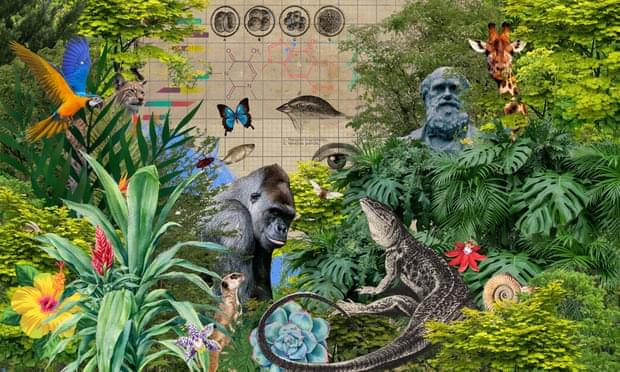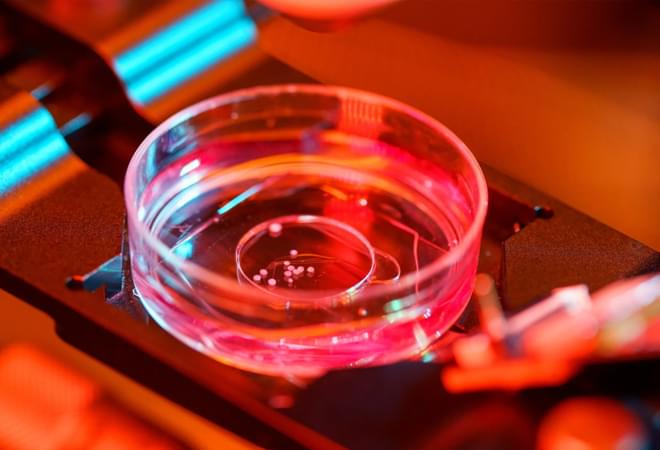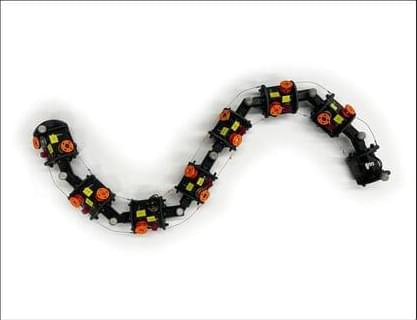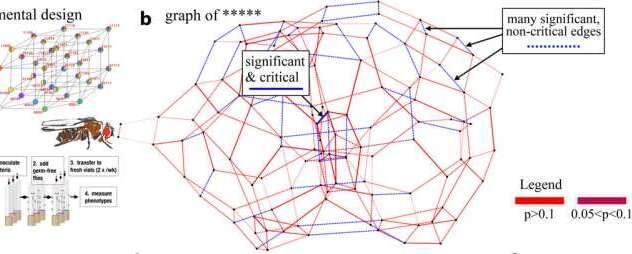A joint Harvard-NASA study.



A new wave of scientists argues that mainstream evolutionary theory needs an urgent overhaul. Their opponents have dismissed them as misguided careerists – and the conflict may determine the future of biology.

Robert Sapolsky is one of the world’s leading neuroscientists, with a focus on the physiological effects of stress. (For years, he spent his summers in Kenya, alone except for the baboons he was observing.) Steve asks Robert why we value human life over animals, why he’s lost faith in the criminal justice system, and how to look casual when you’re about to blow-dart a very large and potentially unhappy primate.\
\
This episode was originally published March 5, 2021.\
For a full transcript, resources, and more, visit: https://freak.ws/3WQAjmF\
\
ABOUT PEOPLE I (MOSTLY) ADMIRE:\
People I (Mostly) Admire is hosted by Steven Levitt, the unorthodox University of Chicago economist and co-author of the Freakonomics book series, who tracks down other high achievers and asks questions that only he would think to ask. Guests include all-time Jeopardy! champion (and now host) Ken Jennings, YouTube C.E.O. Susan Wojcicki, W.N.B.A. champion Sue Bird, Operation Warp Speed chief Moncef Slaoui, and neuroscientist/actress (also now Jeopardy! host) Mayim Bialik. Winner of Adweek‘s 2021 Best Interview Podcast of the Year.\
\
SUBSCRIBE TO PEOPLE I (MOSTLY) ADMIRE:\
YouTube: https://freak.ws/3yIl6dl\
Stitcher: https://freak.ws/3ENOP8v\
Apple Podcasts: https://freak.ws/3ELfGST\
Spotify: https://freak.ws/3D6uqKV\
\
ABOUT FREAKONOMICS RADIO NETWORK:\
Freakonomics began as a book, which led to a blog, a documentary film, more books, a pair of pants, and in 2010, a podcast called Freakonomics Radio. Hosted by Stephen J. Dubner, it’s one of the most popular podcasts in the world, with a reputation for storytelling that is both rigorous and entertaining. Its archive of more than 500 episodes is available, for free, on any podcast app, and the show airs weekly on NPR stations. Freakonomics Radio is now the flagship show of the Freakonomics Radio Network, which includes the podcasts No Stupid Questions (est. 2020), People I (Mostly) Admire (2020), and Freakonomics, M.D. (2021). \
\
FREAKONOMICS RADIO NETWORK PODCASTS:\
Freakonomics Radio: https://freakonomics.com/series/freak…\
No Stupid Questions: https://freakonomics.com/series/nsq/\
People I (Mostly) Admire: https://freakonomics.com/series/peopl…\
Freakonomics, M.D.: https://freakonomics.com/series/bapu/\
Special series: https://freakonomics.com/topics/\
\
00:00 Robert Sapolsky bio\
01:37 Baboon research in Kenya\
3:03 Baboon social rank and health\
4:14 Blow-dart sedation challenges\
7:40 Why human and animal stress are similar\
11:09 Why Sapolsky only studied male baboons\
12:42 Affiliation vs. rank in baboons\
14:08 Tragic end of research with first baboon troop\
17:38 Why humans prioritize human lives\
19:25 How humans prioritize pets\
19:47 Prioritization of tigers in India\
21:00 Harambe the gorilla\
22:19 Chronic stress research\
25:08 Ways to respond to stress\
26:00 Genetic influence on stress\
26:45 ACE score to quantify stress\
28:49 Addressing PTSD to reduce crime\
29:35 Behave-Sapolsky book on violence\
29:56 Free will and violence\
30:35 Abolishment of criminal justice system\
30:54 The frontal cortex and impulse control\
31:31 Frontal cortex trauma in death row inmates\
32:29 Purposes of punishment\
32:46 Retribution\
32:59 Incapacitation and deterrence\
33:35 Quarantine model of punishment\
34:10 “Biological luck” in blame and reward\
34:51 Epilepsy, schizophrenia, and dyslexia misunderstood\
37:06 How to be a better storyteller.

The world works at different levels — fundamental physics, physics, chemistry, biology, psychology, sociology — with each level having its own rules and regularities. Here’s the deep question: Ultimately, can what happens at a higher level be explained entirely in terms of what happens at a lower level? If the answer is ‘No’, if complete explanatory reduction fails, then what else could be going on?\
\
Free access to Closer to Truth’s library of 5,000 videos: http://bit.ly/376lkKN\
\
Watch more interviews on strong emergence: https://bit.ly/3vZsgq4\
\
George Francis Rayner Ellis is the Emeritus Distinguished Professor of Complex Systems in the Department of Mathematics and Applied Mathematics at the University of Cape Town in South Africa.\
\
Register for free at CTT.com for subscriber-only exclusives: http://bit.ly/2GXmFsP\
\
Closer to Truth presents the world’s greatest thinkers exploring humanity’s deepest questions. Discover fundamental issues of existence. Engage new and diverse ways of thinking. Appreciate intense debates. Share your own opinions. Seek your own answers.

I dont know about sleep weapons, it s possible probably. More concerning to me, i read a paper 20+ years back about cell towers and cell phone frequencies as a possible tool for mind control, some way connected to frequency of human brain.
China’s military is developing advanced psychological warfare and brain-influencing weapons as part of a new warfighting strategy, according to a report on People’s Liberation Army cognitive warfare.
The report, “Warfare in the Cognitive Age: NeuroStrike and the PLA’s Advanced Psychological Weapons and Tactics,” was published earlier this month by The CCP Biothreats Initiative, a research group.
“The PLA is at the forefront of incorporating advanced technologies such as artificial intelligence, brain-computer interfaces and novel biological weapons into its military strategies,” the think tank’s analysts concluded.


To advance our overall understanding and discover principles of mechanical intelligence in limbless locomotion and to understand the potential role of bilateral actuation specifically in mechanical control, we took a comparative biological and robophysical approach using two complementary models: a biological model, the nematode C. elegans, and a robophysical model, a limbless robot incorporating a bilateral actuation scheme that permits programmable, dynamic, and quantifiable body compliance (Fig. 1B). This compliance governs the passive body-environment interactions in the horizontal plane that allow mechanical intelligence. Because separating neural and mechanical aspects of control is challenging in a freely locomoting living system, we used the robot as a model (22, 24, 49, 50) that then allowed mechanical intelligence to be isolated from active controls and to be systematically tuned and tested.
Using comparisons between the kinematics and locomotor performance of our biological and robophysical models, we show that mechanical intelligence alone is sufficient for an open-loop limbless robot to reproduce locomotory behavior of nematodes. Mechanical intelligence simplifies controls in terrestrial limbless locomotion by taking advantage of passive body-environment interactions that enable heterogeneity negotiation, thereby stabilizing locomotion. Further, we show that a simple active behavior inspired by nematodes takes advantage of mechanical intelligence to enhance locomotion performance even further. Our method and results not only provide insight into the functional mechanism of mechanical intelligence in organismal limbless locomotion but also provide an alternative paradigm for limbless robot development that simplifies control in complex environments.

A team of researchers around Berlin mathematics professor Michael Joswig is presenting a novel concept for the mathematical modeling of genetic interactions in biological systems. Collaborating with biologists from ETH Zurich and Carnegy Science (U.S.), the team has successfully identified master regulators within the context of an entire genetic network.
The research results provide a coherent theoretical framework for analyzing biological networks and have been published in the Proceedings of the National Academy of Sciences.
It is a longstanding goal of biologists to determine the key genes and species that have a decisive impact on evolution, ecology, and health. Researchers have now succeeded in identifying certain genes as master regulators in biological networks. These key regulators exert greater control within the system and steer essential cellular processes. Previous studies have mainly focused on pairwise interactions within the system, which can be strongly affected by genetic background or biological context.